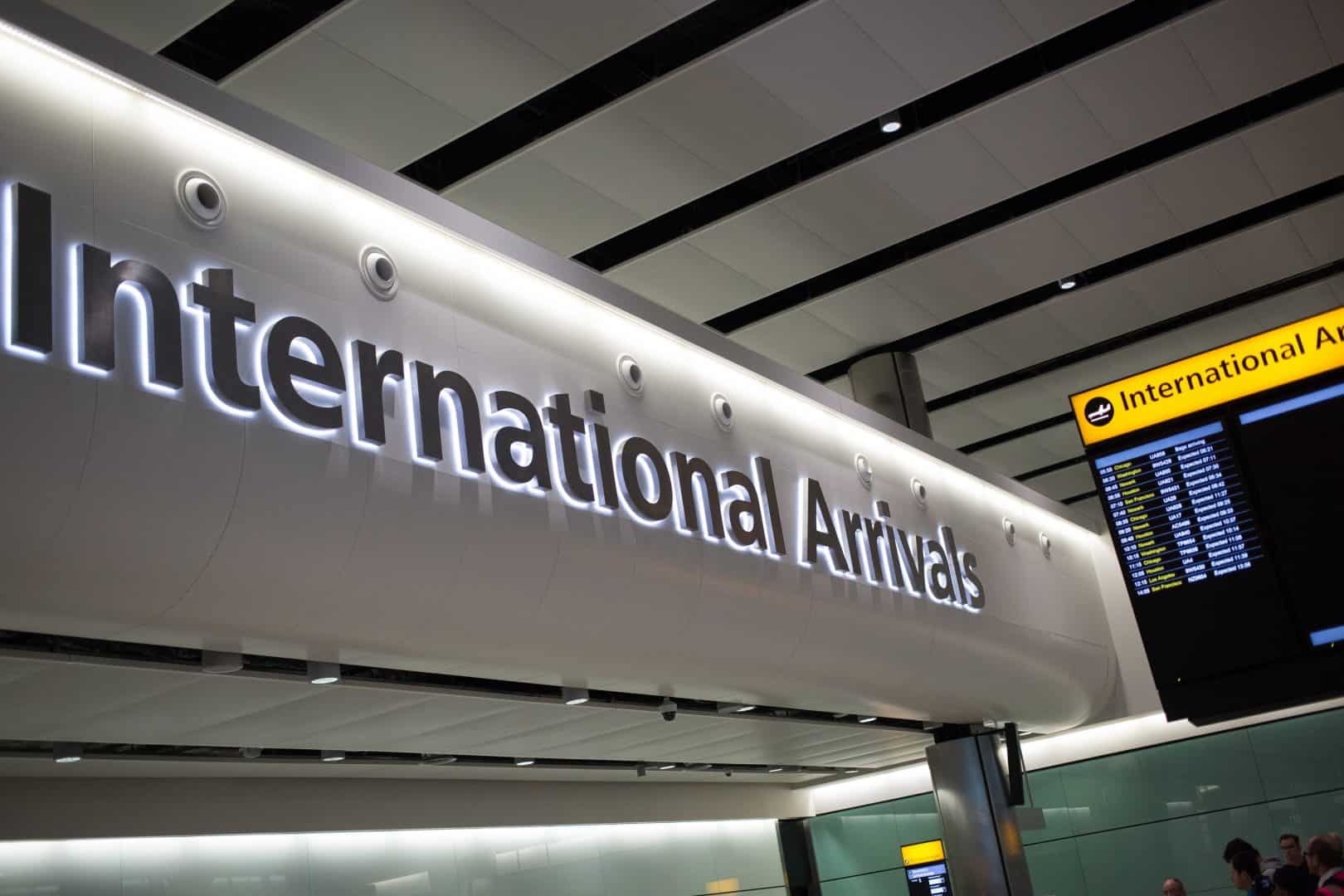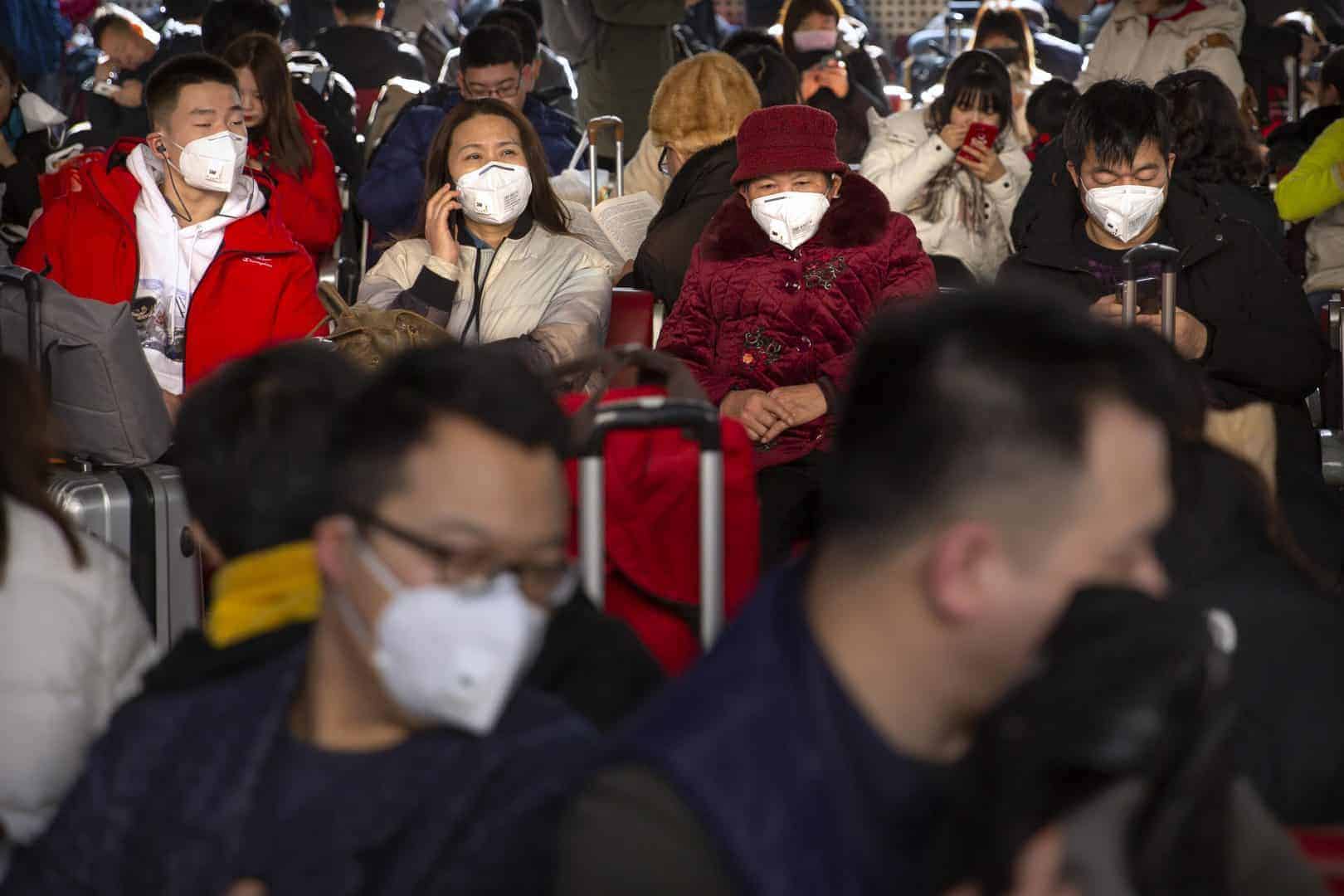Travellers from the area of China at the centre of the coronavirus outbreak will be separated from other passengers on arrival at Heathrow Airport as UK health chiefs step up their response.
17 people are confirmed to have died and hundreds of others have been infected, with cases detected in countries including the US, Japan, Thailand and South Korea.
The World Health Organisation (WHO) is expected to declare a Public Health Emergency of International Concern in response to the virus, which appears to have originated in the city of Wuhan, in eastern China.
Transport Secretary Grant Shapps has said Public Health England is putting in place new precautions in relation to travellers to the UK from the region.

“There have been some announcements this morning about flights that come direct from the affected region to Heathrow with some additional measures there,” he told Sky News.
“At the moment Public Health England have moved this from ‘very low’ to ‘low’ but obviously we want to stay ahead of the issue so we are keeping a very close eye on it. Initially this is to ensure that when flights come in directly into Heathrow there is a separate area for people to arrive in.”
The Foreign Office has updated its advice for Britons travelling to China, warning the virus had spread to other areas outside the Hubei province.
The illness comes from a new coronavirus, not been previously identified in humans, that Chinese health officials said had spread from human to human and may be mutating.
Coronaviruses are a large family of viruses that cause illnesses ranging from the common cold to more severe diseases such as Severe Acute Respiratory Syndrome (Sars).

Death toll and cases of mutating viral respiratory illness rise sharply in China
Chinese health authorities have urged people in the city of Wuhan to avoid crowds and public gatherings after warning that a new viral illness that has infected hundreds and caused at least 17 deaths could spread further.
The number of new cases has risen sharply in China, the centre of the outbreak. There were 543 confirmed cases by Wednesday afternoon.
17 people have now died, all thought to be in Hubei province, since the outbreak emerged in its provincial capital of Wuhan late last month.
“There has already been human-to-human transmission and infection of medical workers,” Li said at a news conference with health experts. “Evidence has shown that the disease has been transmitted through the respiratory tract and there is the possibility of viral mutation.”
The illness comes from a newly identified type of coronavirus, a family of viruses that can cause the common cold as well as more serious illnesses such as the Sars outbreak that spread from China to more than a dozen countries in 2002-03 and killed about 800 people.
Thai authorities have confirmed four cases – a Thai national and three Chinese visitors. Japan, South Korea, the US and Taiwan have reported one case each. All the illnesses were of people from Wuhan or who had recently travelled there.
“The situation is under control here,” Thailand public health minister Anutin Charnvirakul told reporters, saying there are no reports of the infection spreading to others.

“We checked all of them: taxi drivers, people who wheeled the wheelchairs for the patients, doctors and nurses who worked around them.”
Macao, a former Portuguese colony that is a semi-autonomous Chinese city, reported one case on Wednesday.
Travel agencies that organise trips to North Korea say the country has banned foreign tourists because of the outbreak. Most tourists to North Korea are either Chinese or travel to the country through neighbouring China. North Korea also closed its borders in 2003 during the Sars scare.
Other countries have stepped up screening measures for travellers from China, especially those arriving from Wuhan. Worries have been heightened by the coming of the Lunar New Year holiday rush, when millions of Chinese travel at home and abroad.

Officials said it was too early to compare the new virus with Sars (severe acute respiratory syndrome) or Mers (Middle East respiratory syndrome), in terms of how lethal it might be. They attributed the spike in new cases to improvements in detection and monitoring.
Gao Fu, of the Chinese Academy of Sciences and head of the Chinese Centre for Disease Control, said officials are working on the assumption that the outbreak resulted from human exposure to wild animals being sold illegally at a food market in Wuhan and that the virus is mutating.
Jiao Yahui, a health commission official, said: “The disease will continue to develop. It has developed different features compared with the early stage, and the prevention and precautionary measures need to change accordingly.”
Health officials confirmed earlier this week that the disease can be spread between humans after finding two infected people in Guangdong province in southern China who had not been to Wuhan.
Fifteen medical workers also tested positive for the virus, Wuhan Municipal Health Commission said. Fourteen of them, one doctor and 13 nurses, were infected by a patient who had been admitted to hospital for neurosurgery but also had the coronavirus.

Coronavirus outbreak: what you need to know
– What is coronavirus?
Coronaviruses are a large family of viruses that cause illnesses ranging from the common cold to more severe diseases such as Severe Acute Respiratory Syndrome (Sars).
The strain that has recently emerged is a new strain that has not been previously identified in humans. The Chinese government has warned of the virus mutating.
– Were did the coronavirus come from?
Coronaviruses are zoonotic, meaning they are transmitted between animals and people, the World Health Organisation (WHO) says.
The first cases identified were among people connected to the Huanan Seafood Wholesale Market in Wuhan. Cases have since been identified elsewhere which could have been spread through human-to-human transmission.
– How is the virus spread?
Questions remain about the outbreak’s nature and mode of transmission.
Chinese government expert Zhong Nanshan revealed on state television that human-to-human transmission had been confirmed. WHO says some coronaviruses can be transmitted in this way, usually after close contact with an infected person, for example, in a household workplace, or healthcare centre.
Dr Nathalie MacDermott, National Institute for Health Research academic clinical lecturer, King’s College London, said: “While data is still limited it appears likely that the Wuhan Coronavirus is spread through contact with an infected person’s secretions and respiratory droplet infection – this is contact with small particles in the air that occur when an infected person coughs or sneezes.”
– What are the symptoms of coronavirus?
Initial symptoms of the novel coronavirus include fever, cough, tightness of the chest, shortness of breath and breathing difficulties. More severe cases can cause pneumonia, severe acute respiratory syndrome, kidney failure and death.
– Is there a cure for coronavirus?
There are no specific treatments for a new coronavirus but symptoms can be treated.

– What is the scale of the problem?
The new type of coronavirus appears to have originated in the central city of Wuhan, which has reported over 200 cases, including all of the fatalities so far it is thought. The Chinese authorities have confirmed 17 dead as of Wednesday afternoon and 543 infected. Others who have been diagnosed in Beijing, Shanghai and southern Guangdong province had also visited Wuhan. Worldwide, so far 40 cases have now been reported.
Cases have since been detected in Chinese travellers in South Korea, Japan and Thailand. Fears are growing that the increased travel expected over the upcoming Lunar New Year period could aid the spread.
Dr Jeremy Farrar, director of Wellcome, said: “It is possible that the often mild symptoms, and probability of people being affected and infectious without experiencing symptoms (asymptomatic) from this coronavirus may be masking the true numbers of people who have been infected, and the extent of person-to-person transmission.
“It is also probable that we are looking at patients being affected over a number of days from multiple animal sources and with some degree of human-to-human transmission.”
– What is being done to stop it spreading?
Numerous nations including the UK now have adopted screening measures for travellers arriving from China, especially those from Wuhan.
Australia’s chief medical officer Brendan Murphy said his country will be increasing airport screening, with three direct flights a week from Wuhan into Sydney.
And the World Health Organisation is holding an emergency committee on Wednesday in Geneva to ascertain whether the outbreak “constitutes a public health emergency of international concern, and what recommendations should be made to manage it”.
WHO is not currently recommending restriction of travel or trade.
The organisation is urging people to take measures to prevent infection spread including: regular hand washing, covering the mouth and nose when coughing and sneezing and thoroughly cooking meat and eggs. It also recommends avoiding close contact with anyone showing symptoms of respiratory illness such as coughing and sneezing.
Public Health England said travellers to Wuhan should practise good hand and respiratory hygiene and avoid animal and bird markets.

